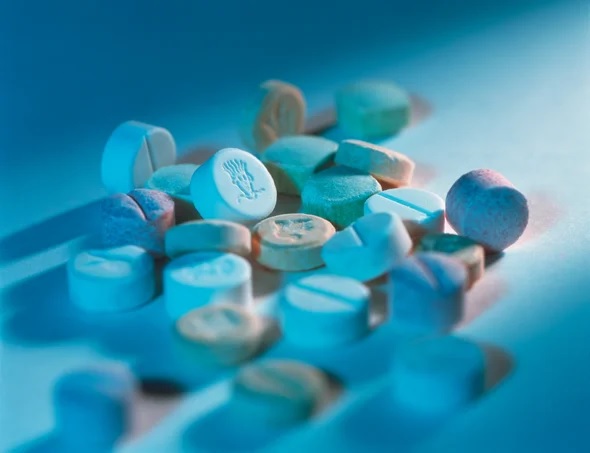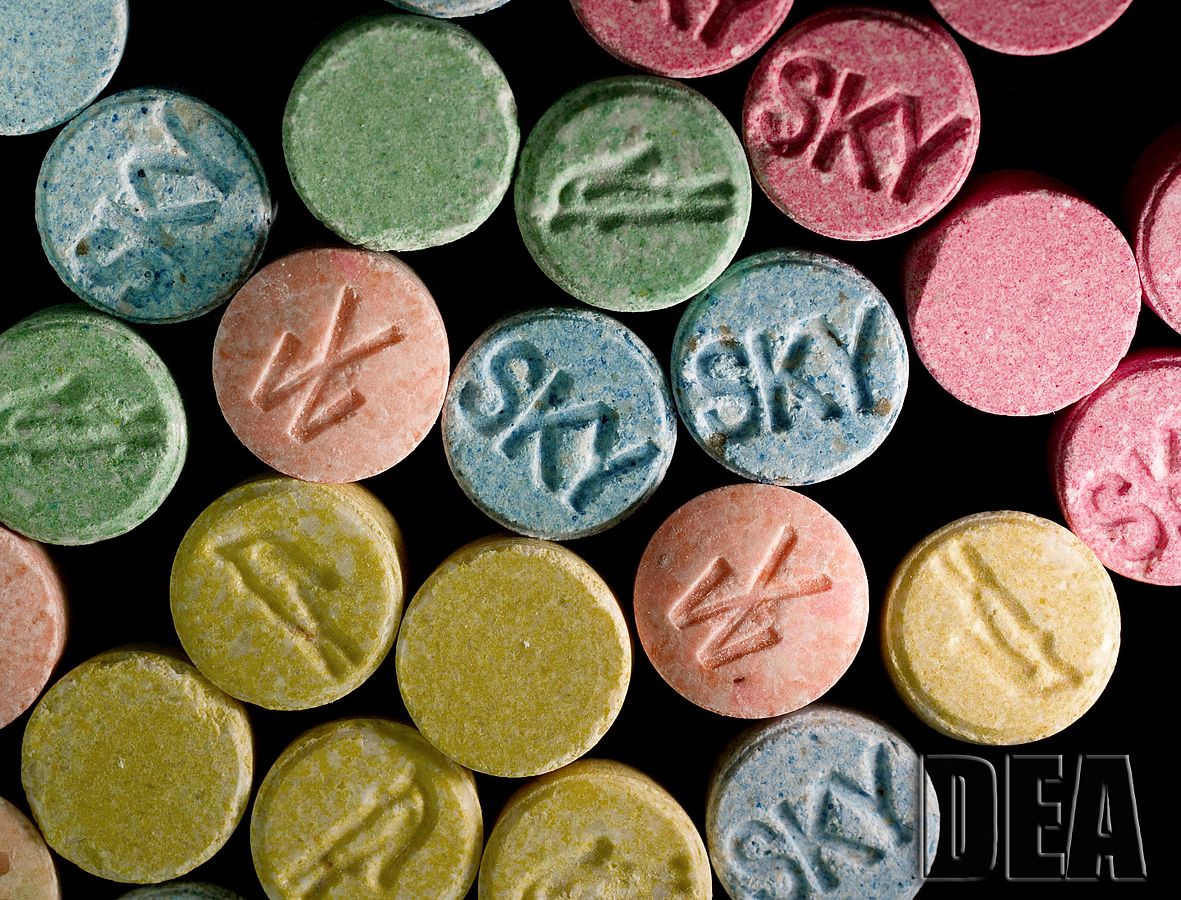By Charalampos Karouzos,
In the sphere of psychoactive substances, few have captured the attention of both users and the scientific community like MDMA. The drug known by many names including ecstasy, molly, E, X, Adam, XTC, Love Drug, Scooby Snacks, Euphoria along with others, is a common participant in the party scene as its effects undoubtedly enhance the nightlife experience of the user. The journey of the psychoactive compound, as in most such cases, began as a therapeutic aid that later illicitly developed into a VIP guest in electronic music festivals, with a significant impact on the broader culture and health. However, novel research on the potential benefits of ecstasy in treating psychological disorders has re-inflated the debate around MDMA’s clandestine nature.
The drug was first developed in 1912 by Merck, as an unintended byproduct of research, and was later utilized along with psychotherapy to treat patients; however, it wasn’t until the 1970s when the drug started to be used illicitly for recreational purposes in the Chicago area, with the first report on the psychoactive effect in humans published in 1978 by David Nichols and Alexander Shulgin. Shulgin was personally impressed by the MDMA’s powerful effects, describing it as his “low-calorie martini”, spreading the knowledge he obtained by using the drug that he called “Adam”, to professionals dealing with psychological disorders. The exponential growth of Ecstasy in the USA and Canada, from increased laboratory production to widespread consumption, was halted abruptly by the DEA announcement of emergency Schedule I classification of MDMA on the 31st of May of 1985. The short 15-year run of the drug created such a powerful engagement with the public, making it today a common participant in parties all around the world. The latest change took place in 2017, when FDA granted access for the drug to be used to treat PTSD, a designation that re-inflated conflicts of the past.

MDMA, chemically named 3,4-methylenedioxymethamphetamine, is a substance traditionally categorized as a psychedelic amphetamine, also known as an empathogen and stimulant, as it has a dual action as a stimulant and hallucinogen. The effects experienced by the user are both energizing- stimulating and a distorted perception of reality, enhancing enjoyment, prosocial behavior, lowered social inhibition and increased sexuality. People after consuming 75-150mg of MDMA, usually in a tablet or liquid form administered orally, will start to experience the effects after 75-120 minutes as the drug increases the concentration of three important neurotransmitters at the brain serotonin, dopamine, and noradrenaline. The combination of increased serotonin and dopamine makes MDMA distinct from other common recreational drugs that predominantly affect either serotonin (like selective serotonin reuptake inhibitors, or SSRIs) or dopamine (like cocaine or amphetamines). However, the release of large amounts of neurotransmitters instantly can lead to a “comedown” period as the available neurotransmitters are temporarily depleted leading to feelings of fatigue, depression, and overall negativity.
Ecstasy, however, must not be examined solely through the lens of a scientist as it belongs in the small group of recreational drugs that have/had undoubtedly a strong cultural impact. MDMA emerged in the party scene in the 1970s and was widely available since 1980 since its prosocial, emerging, and euphoric effects were matched with the rise of vibrant electronic, rave music. All-night dance parties provided the ideal ground for the flourishing of the drug as higher motor activity, reduced sense of identity, and poor awareness of surroundings collectively improved the experience of users. Ravers, especially in the beginning of the music genre weren’t universally accepted by the public, with MDMA’s empathogenic properties further enhancing the communal and immersive nature of the rave culture, bringing people closer, increasing social acceptance in the festivals, thus naming it the “party drug”.
The party drug, however, wasn’t the sole player in its emergence and establishment in the rave environment but it is a result of a synergistic relationship. The intense sensory effects of high BPM, energizing music coupled with the presence of bright lighting in a dark environment lay the ground for the psychedelic amphetamine’s effects to appeal to ravers. Further, the inhibition-reducing effects of Ecstasy make mass communion enjoyable to users while at the same time providing the necessary party fuel needed to enjoy the music nonstop all night long. In addition, MDMA compared to other common recreational drugs encountered in events, is remarkably affordable, found even for 1 dollar per tablet, containing logos and faces of many popular companies or people, “decriminalizing” the illicit state of the drug.
References
- Morbidity and mortality weekly report (MMWR) (no date) Centers for Disease Control and Prevention. Available here
- Mitchell, J.M., Bogenschutz, M., Lilienstein, A. et al. MDMA-assisted therapy for severe PTSD: a randomized, double-blind, placebo-controlled phase 3 study. Nat Med 27, 1025–1033 (2021).
- Panton, M., Kim, J., Van Alstyne, ·. K., & Anagnostara, S. (2021). MDMA and memory, addiction, and depression: Dose-effect analysis.
- Nuwer, R. (2023) MDMA is one of the safer illegal drugs. but there are risks., The New York Times. Available here
- MDMA (2021) Bristol Drugs Project. Available here
- Nature Research (2020). MDMA-assisted therapy for severe PTSD: A randomized, double-blind, placebo-controlled phase 3 study. Nature Medicine.
- Griffin, D., Black, N. and DiCarlo, P. (2018) 9 things everyone should know about the drug Molly, CNN. Available here




